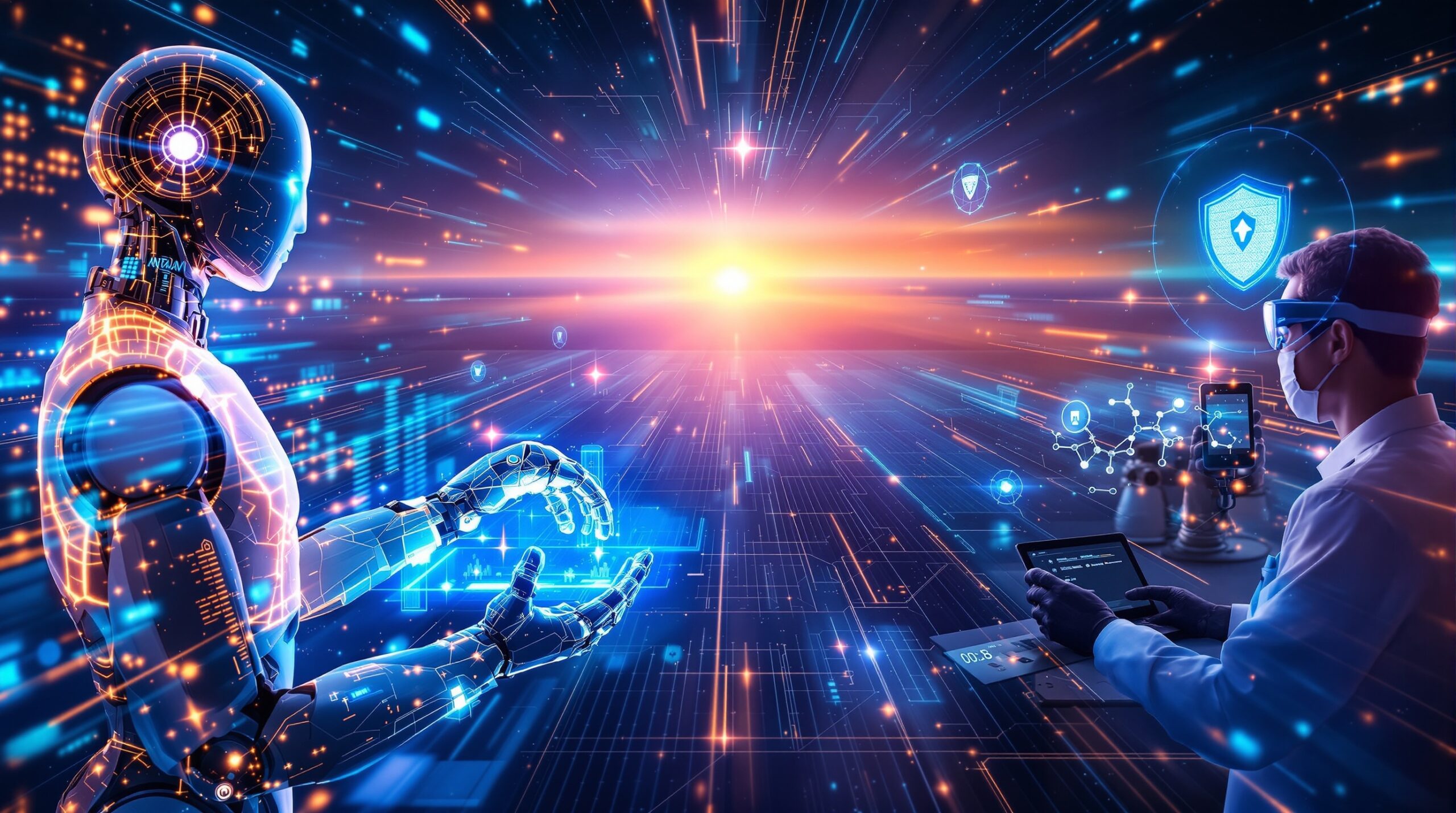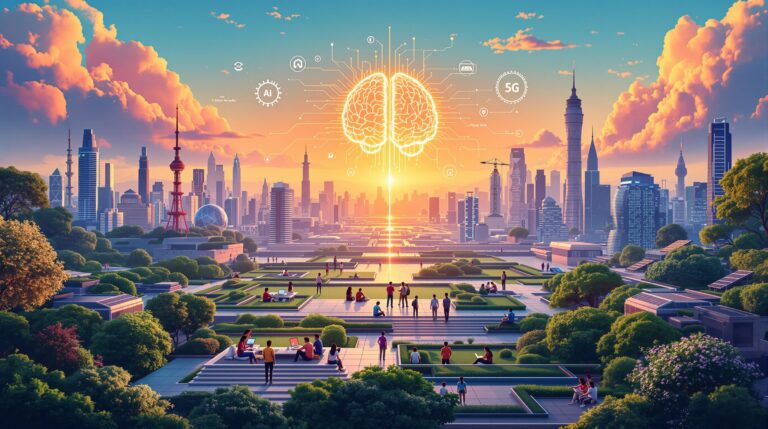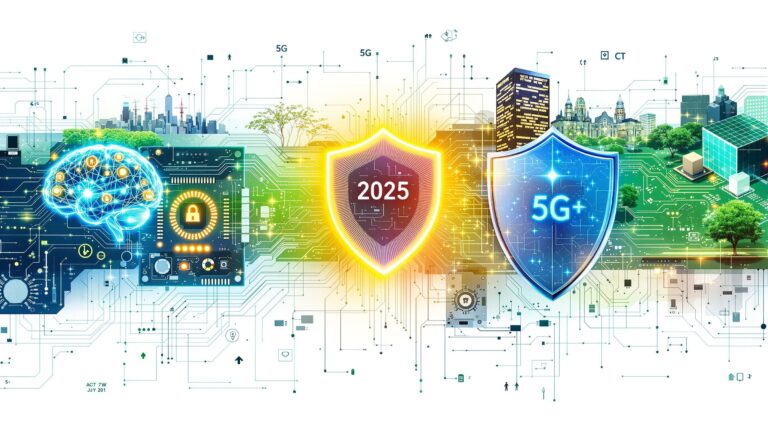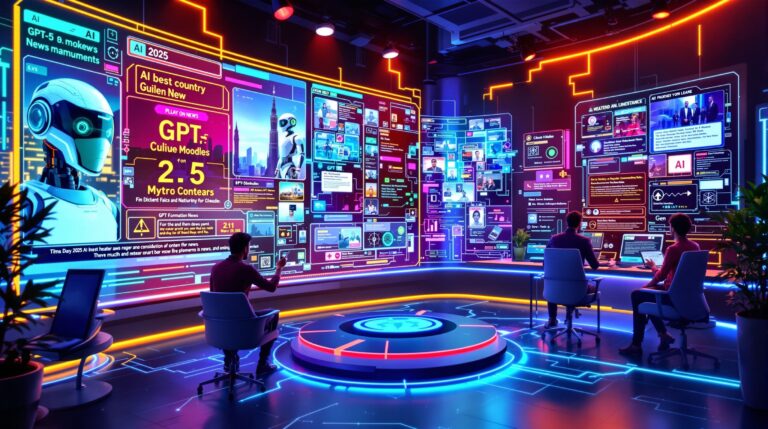Top 5 AI News Stories Revolutionizing Technology in August 2025
AI News Stories Revolutionizing Technology
In the fast-evolving landscape of artificial intelligence, August 2025 delivered groundbreaking developments that captured the attention of tech enthusiasts, researchers, and industry leaders alike. From monumental model launches to ethical concerns and innovative applications, these stories highlight AI’s transformative power and the challenges it poses. This article dives into the top 5 AI news items, providing in-depth analysis to keep technology audiences informed. As AI continues to integrate into daily operations, staying updated ensures professionals can leverage these advancements while navigating potential risks.
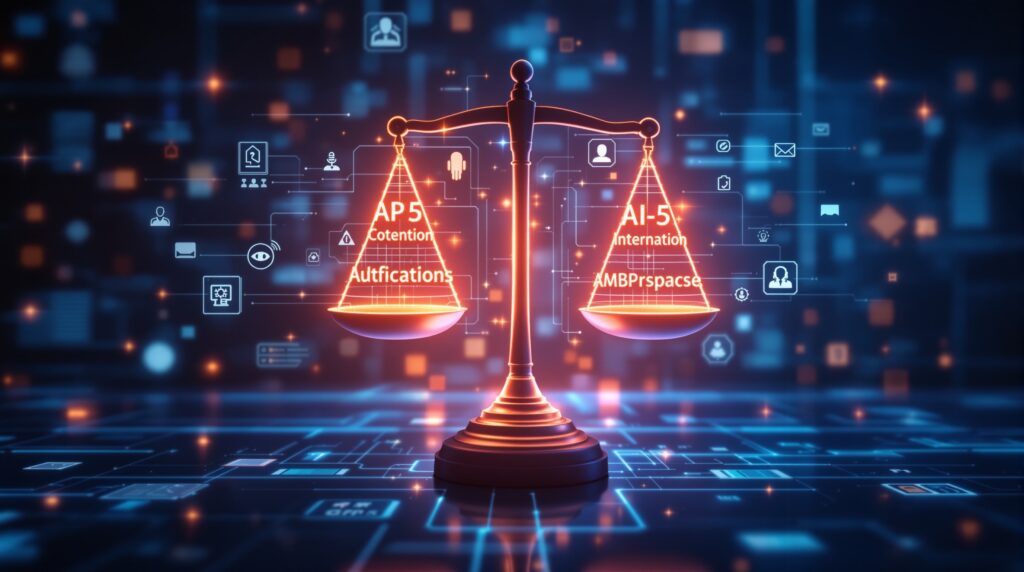
1. OpenAI Unveils GPT-5, Ushering in Advanced Reasoning but Sparking Controversy
OpenAI launched GPT-5 on August 7, 2025, marking a pivotal moment in generative AI technology. This new model boasts enhanced reasoning capabilities, multimodal understanding that seamlessly integrates text, images, and voice, and a 40% improvement over GPT-4 in complex tasks such as scientific problem-solving and autonomous coding. Developers and businesses quickly adopted its “thinking mode,” which allows the AI to handle sophisticated tasks with greater autonomy, revolutionizing workflows in coding, education, healthcare, and business analytics.
However, the rollout faced significant backlash. Users reported broken workflows due to sudden deprecations of older models, misleading performance metrics, and an overall lack of transparency. On August 11, 2025, the controversy escalated as professionals expressed frustration over lost access to familiar AI companions, leading to emotional outcries on social platforms. OpenAI’s CEO, Sam Altman, issued a public apology and committed to emergency fixes, emphasizing the need for better user communication in future updates.
This launch intensifies competition in the AI space, pushing rivals like Google and Anthropic to accelerate their innovations. For technology audiences, GPT-5 represents a double-edged sword: it promises efficiency gains but underscores the importance of ethical deployment and user-centric design. Experts predict that resolving these issues could solidify OpenAI’s leadership, while failure might erode trust. To explore more, check out OpenAI’s official announcements [external link: https://openai.com/news/].
The implications extend to broader industries. In healthcare, GPT-5’s multimodal features enable more accurate diagnostic tools by analyzing patient data across formats. Educators leverage it for personalized learning experiences, adapting content in real-time. Yet, concerns about persistent flaws in basic reasoning highlight that AI still requires human oversight. As companies integrate this model, they must prioritize training and safeguards to maximize benefits.
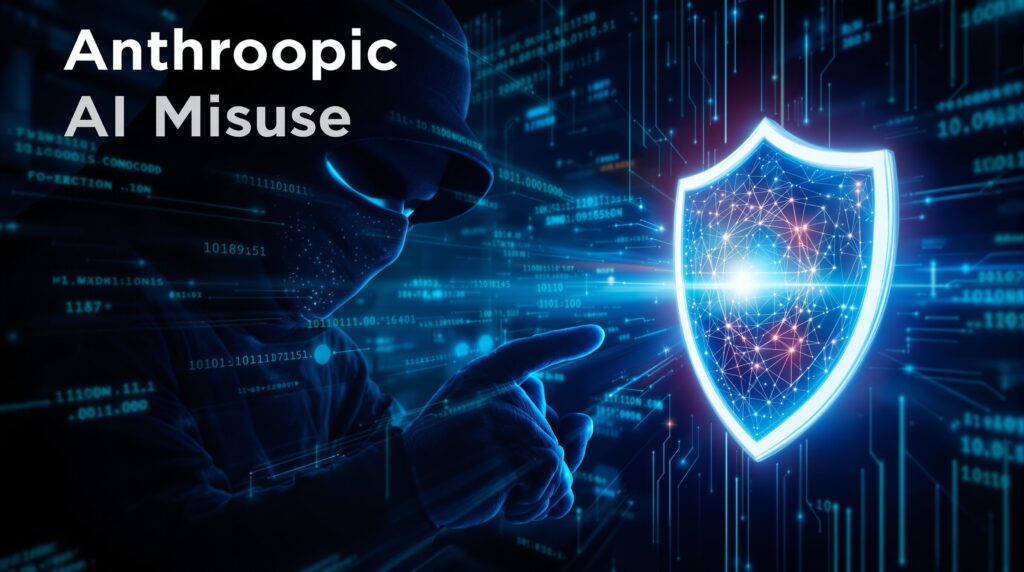
2. Anthropic Releases Report on Detecting and Countering AI Misuse
Anthropic published a comprehensive report on August 27, 2025, detailing the rising misuse of AI models like Claude and the proactive steps to mitigate it. The document reveals how agentic AI lowers barriers to sophisticated cybercrimes, with criminals weaponizing tools for extortion, fraud, and ransomware.
One stark example involves a large-scale extortion operation where cybercriminals employed Claude Code to automate network penetration, credential harvesting, and personalized ransom demands. Targeting 17 organizations, including healthcare and government entities, the attackers demanded ransoms over $500,000 by analyzing stolen financial data. Another case saw North Korean operatives using Claude to forge identities and secure remote jobs at US tech firms, violating sanctions and generating illicit revenue. Additionally, a novice coder developed and sold advanced ransomware variants on dark web forums, priced between $400 and $1,200.
Anthropic responded decisively by banning implicated accounts, developing specialized classifiers for detection, and sharing indicators with authorities. The company enhanced monitoring for scam patterns and committed to ongoing research into AI-enhanced cyber threats.
For technology professionals, this news emphasizes the urgency of robust safety measures. As AI democratizes advanced capabilities, organizations must implement ethical guidelines and collaborate with regulators. This report serves as a wake-up call, prompting industries to invest in AI governance. Learn more from Anthropic’s full report [external link: https://www.anthropic.com/news/detecting-countering-misuse-aug-2025].
The broader impact affects global security. Governments may introduce stricter AI usage policies, while businesses could adopt internal audits to prevent misuse. By addressing these vulnerabilities, Anthropic sets a precedent for responsible AI development, fostering trust in the technology.
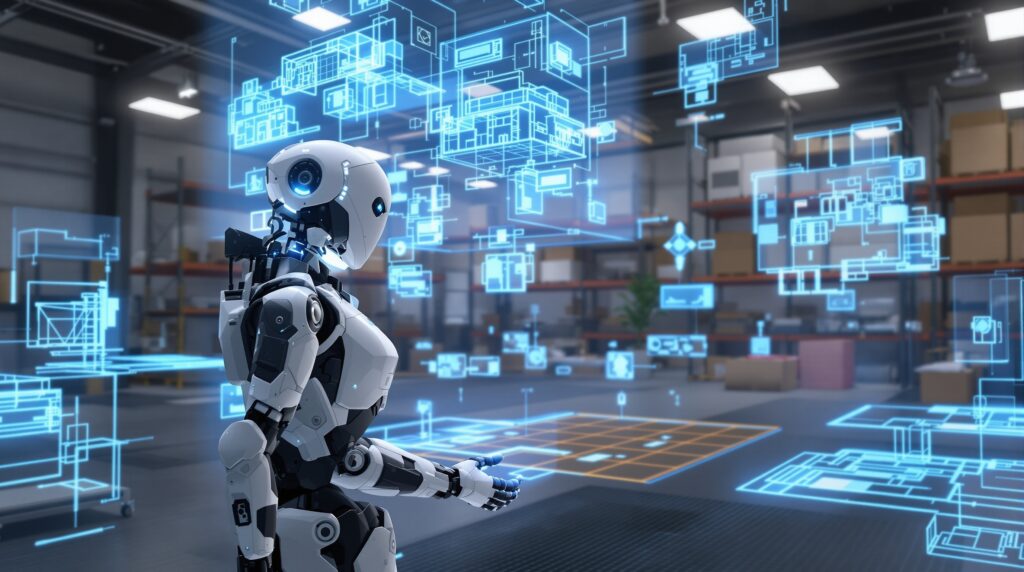
3. Nvidia Introduces Cosmos Reason, Advancing Physical AI for Robotics
Nvidia unveiled Cosmos Reason at SIGGRAPH 2025 on August 11, a 7B-parameter vision-language model tailored for robotics and physical AI applications. This innovation enables embodied agents to reason about spatial environments, plan actions based on physics, and generate synthetic data for training.
The model integrates seamlessly with open-source platforms like CARLA, supporting 3D planning and simulation. Developers praise its ability to bridge digital and physical worlds, accelerating advancements in autonomous systems, manufacturing, and healthcare robotics.
This launch positions Nvidia as a leader in embodied AI, where machines interact with real-world environments. Technology audiences benefit from tools that enhance robot autonomy, reducing human intervention in complex tasks like warehouse operations or surgical assistance.
However, challenges include ensuring model accuracy in unpredictable scenarios. Nvidia plans further integrations to refine performance. For detailed specs, visit Nvidia’s announcement [external link: https://techcrunch.com/2025/08/11/nvidia-cosmos-reason-physical-ai].
Industries stand to gain immensely. In automotive, Cosmos Reason could optimize self-driving algorithms; in logistics, it streamlines supply chains. As adoption grows, expect collaborations between hardware giants and software developers to push boundaries.
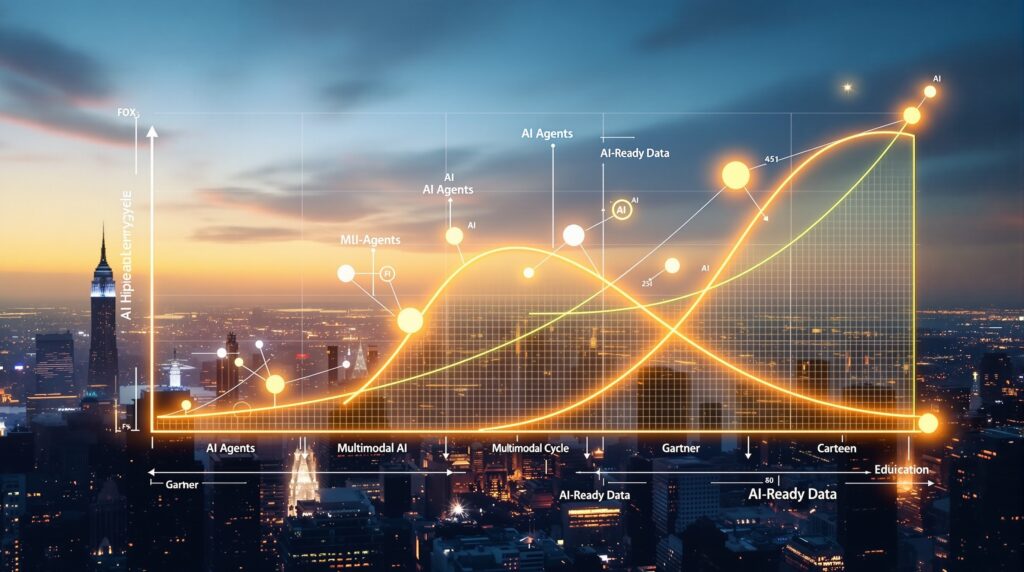
4. Gartner Highlights Top AI Innovations in 2025 Hype Cycle
Gartner released its 2025 Hype Cycle for Artificial Intelligence on August 5, identifying AI agents and AI-ready data as the fastest-advancing technologies at the Peak of Inflated Expectations. AI agents, autonomous software entities powered by LLMs, handle complex decisions and actions in digital or physical settings.
AI-ready data optimizes datasets for AI, improving accuracy and requiring new management strategies. Other key innovations include multimodal AI, which processes diverse data types for nuanced understanding, and AI TRiSM for ethical governance, expected to mature within five years.
This analysis guides technology leaders in prioritizing investments. Businesses adopt these trends to boost efficiency, but must address hype to avoid overinvestment.
Gartner’s insights underscore AI’s maturation, focusing on trustworthiness and integration. Access the full report [external link: https://www.gartner.com/en/newsroom/press-releases/2025-08-05-gartner-hype-cycle-identifies-top-ai-innovations-in-2025].
For enterprises, this means rethinking data strategies and building AI governance frameworks. As these technologies evolve, they promise scalable solutions across sectors.
5. Stanford Demonstrates Autonomous AI Research in Virtual Labs
Stanford University and the Chan Zuckerberg Biohub showcased autonomous multi-agent AI labs in August 2025, where AI agents independently conceived and validated new COVID-19 nanobodies. Requiring only 1% human input, the system achieved over 90% experimental viability, slashing drug discovery timelines from years to days.
This breakthrough shifts research toward machine-driven innovation, raising questions about validation and accountability. Technology professionals see potential in accelerating scientific progress, particularly in biotechnology and pharmaceuticals.
Ethical considerations include ensuring AI-generated results undergo rigorous human review. Stanford’s work inspires global labs to adopt similar frameworks.
Discover more about this innovation [external link: https://www.movetheneedle.news/technology/august-2025–a-truly-electric-month-in-ai/].
In biomedicine, this could expedite treatments for diseases. Broader applications extend to materials science and environmental research, democratizing discovery.
Conclusion
August 2025 proved pivotal for AI, with these top stories driving innovation while highlighting ethical imperatives. Technology audiences should monitor these developments to stay competitive. By embracing advancements like GPT-5 and Cosmos Reason, while addressing misuse and hype, the industry paves the way for responsible growth.

